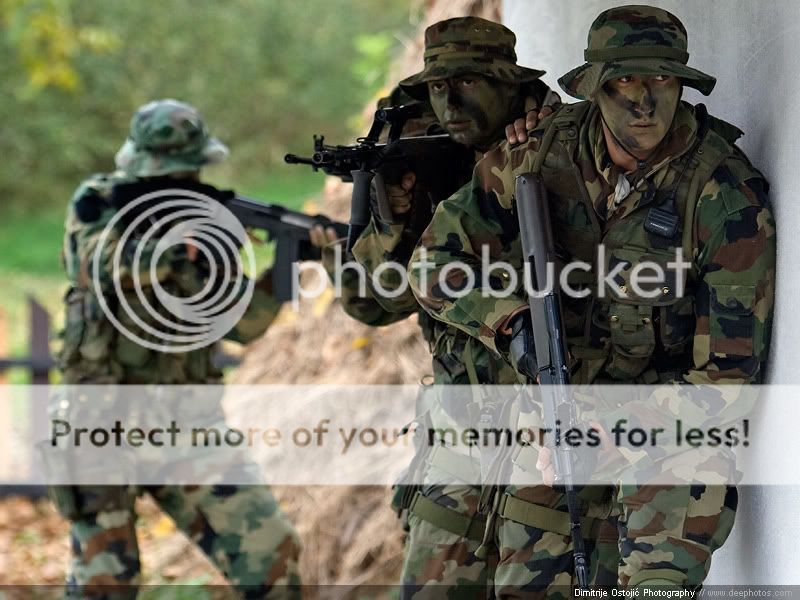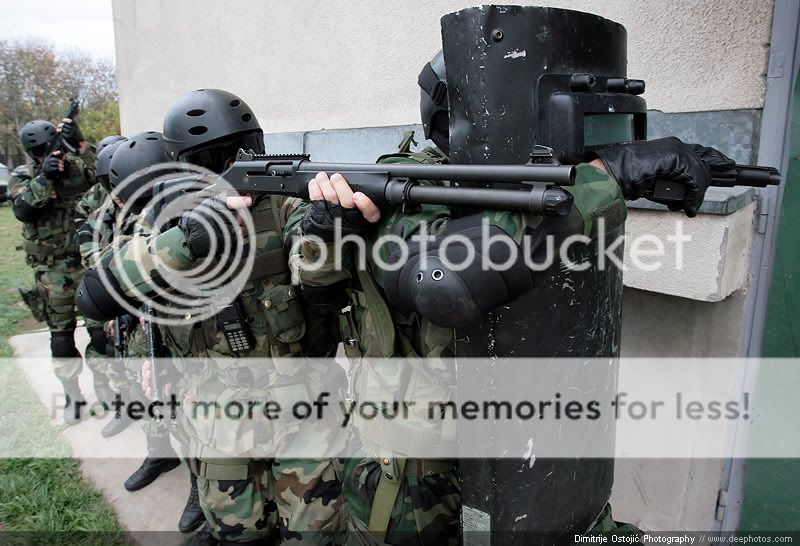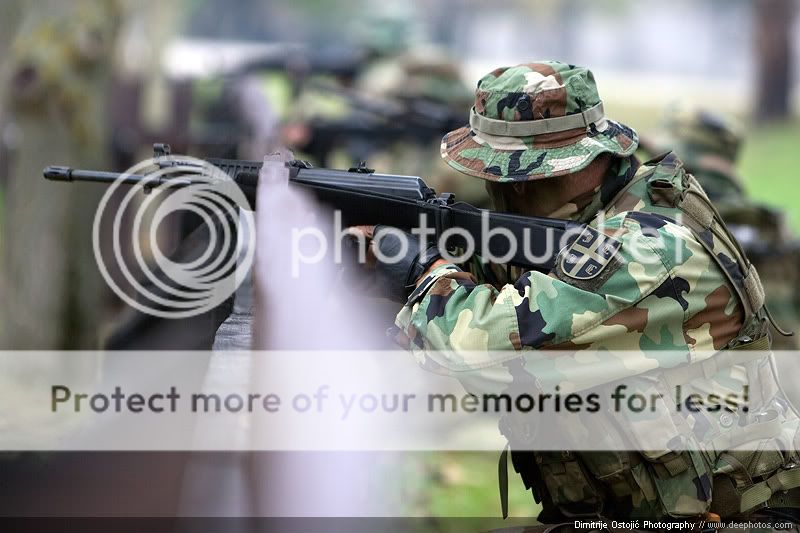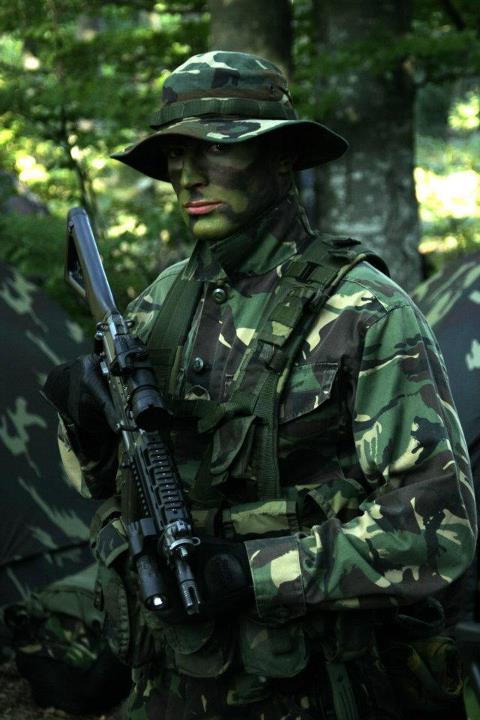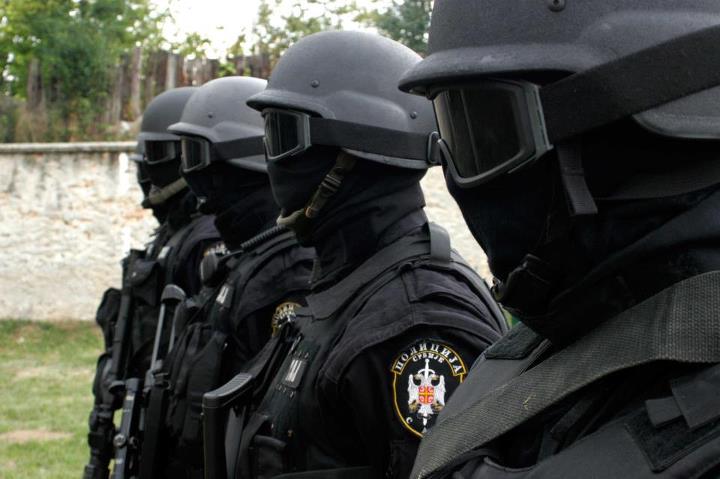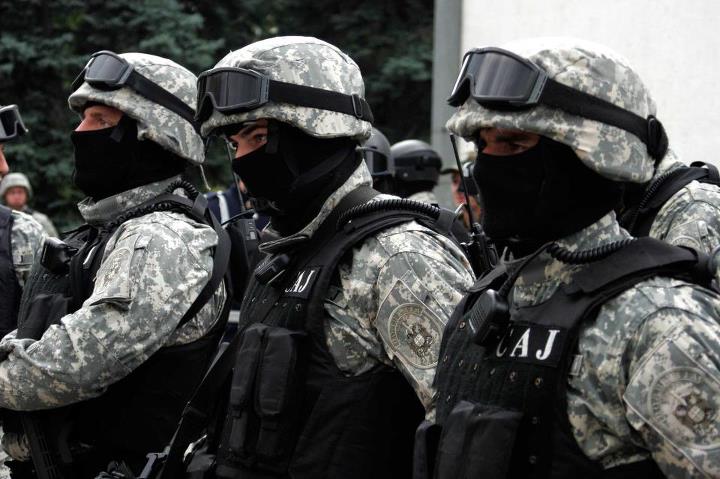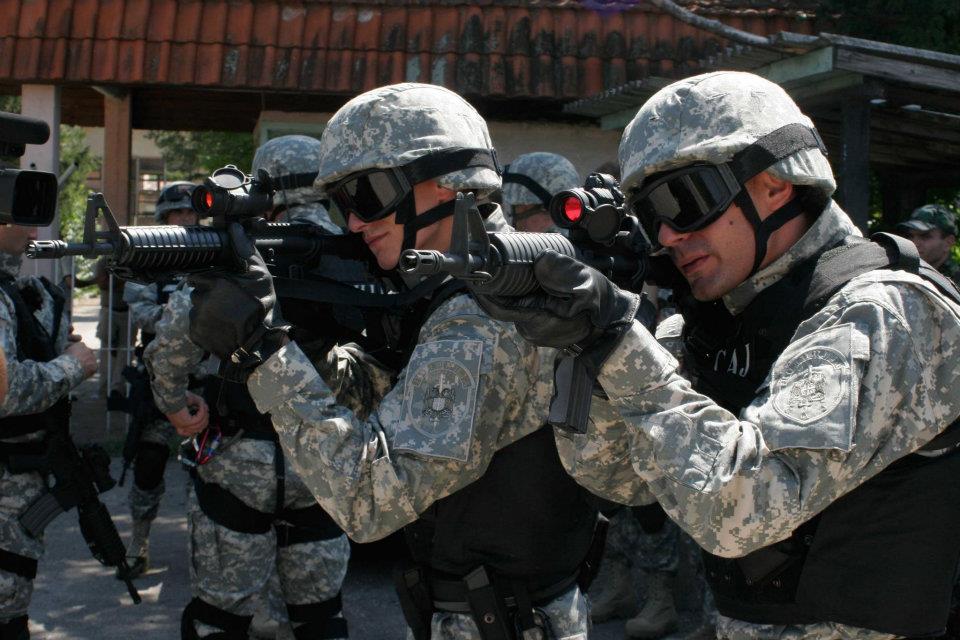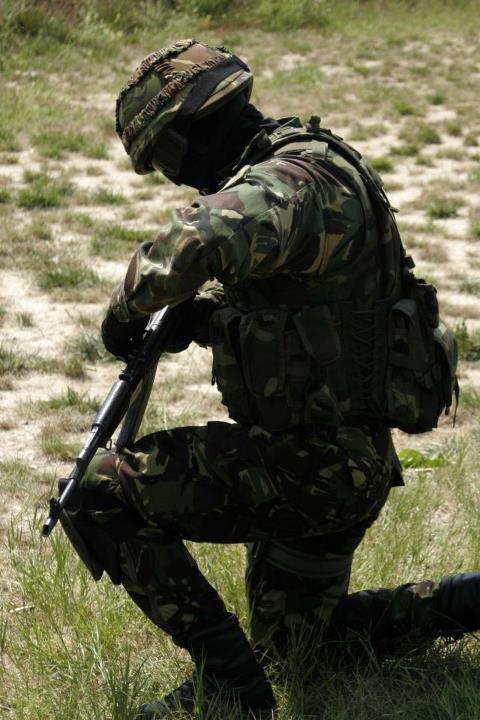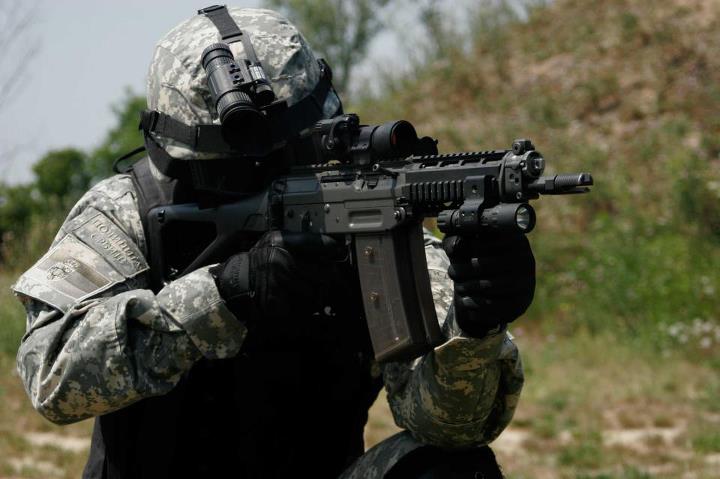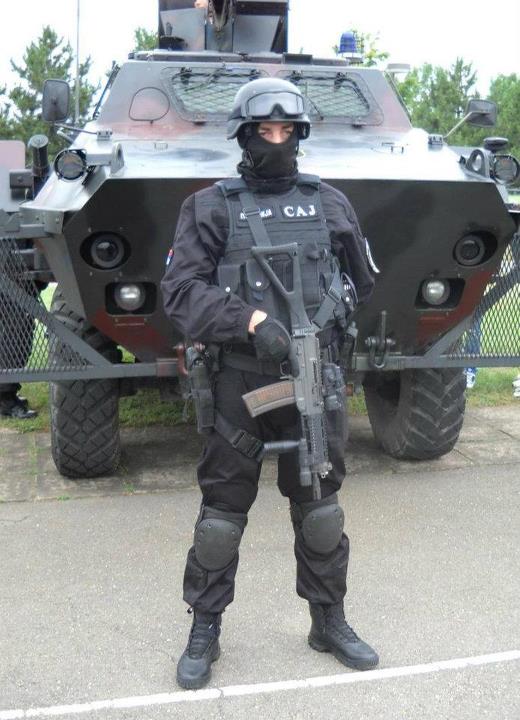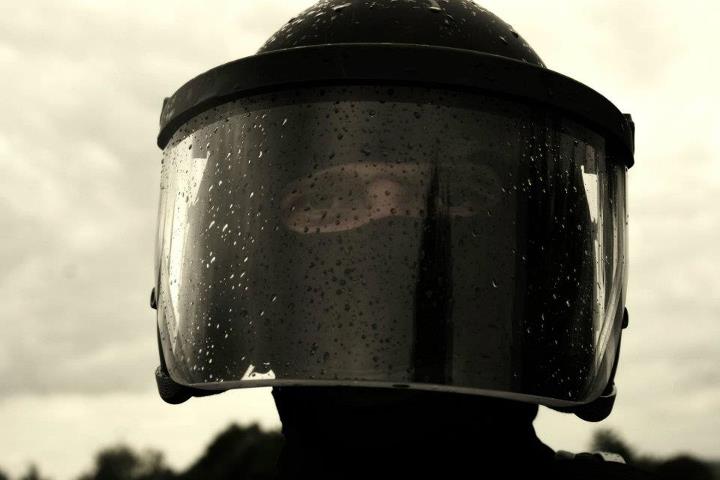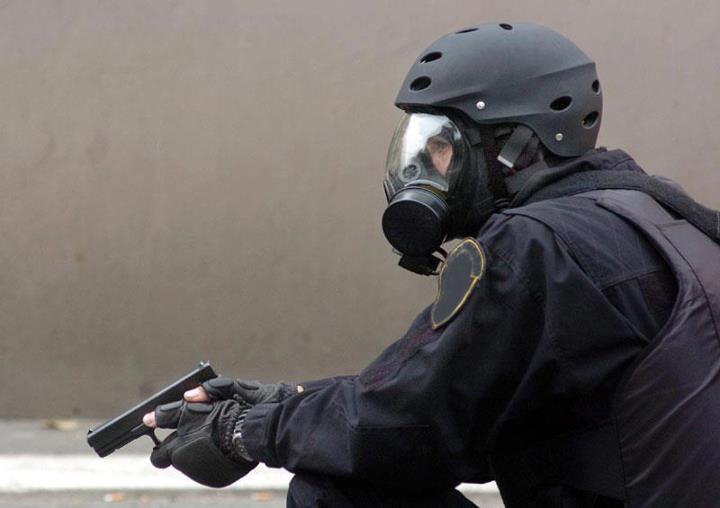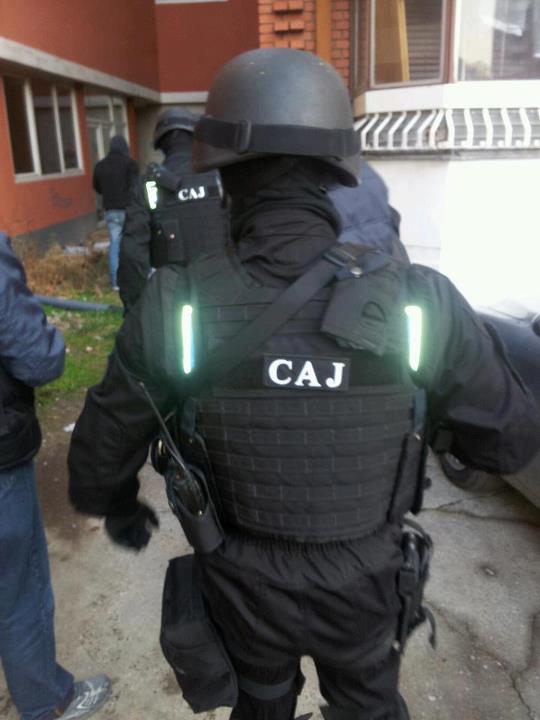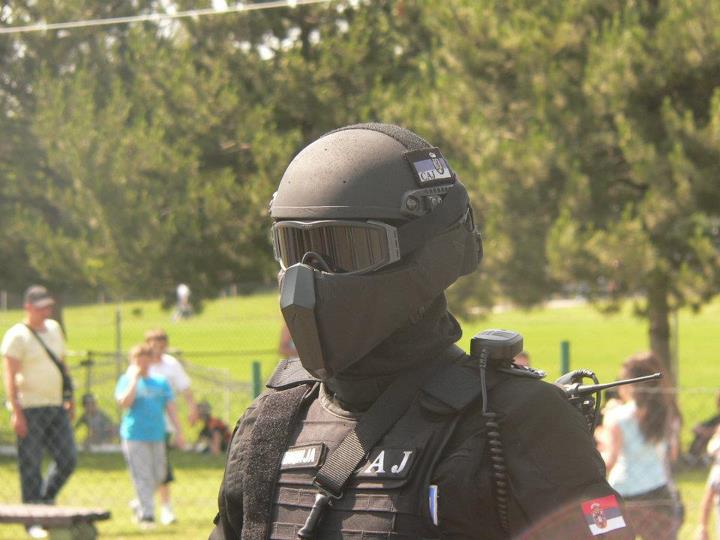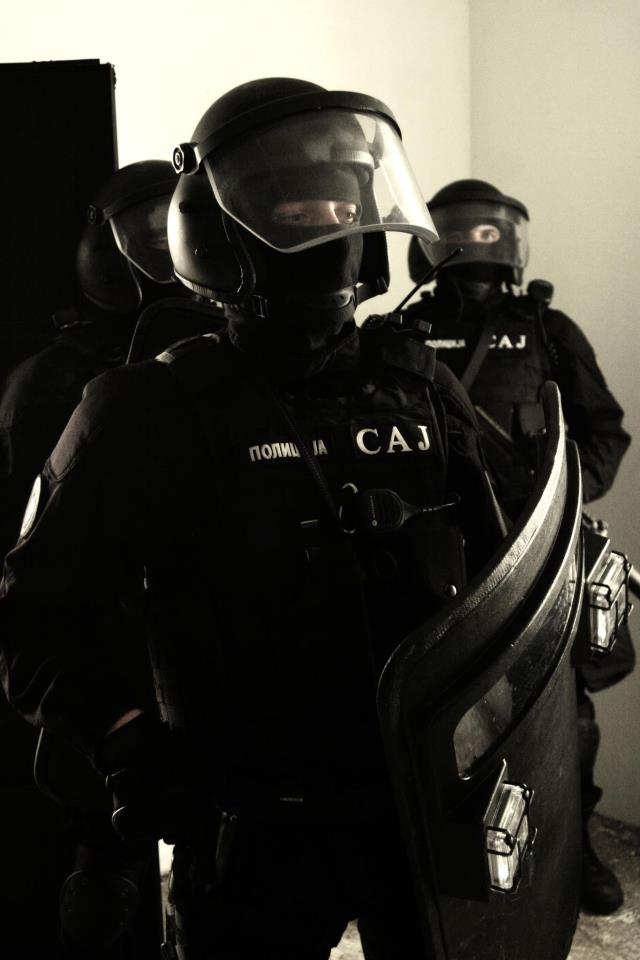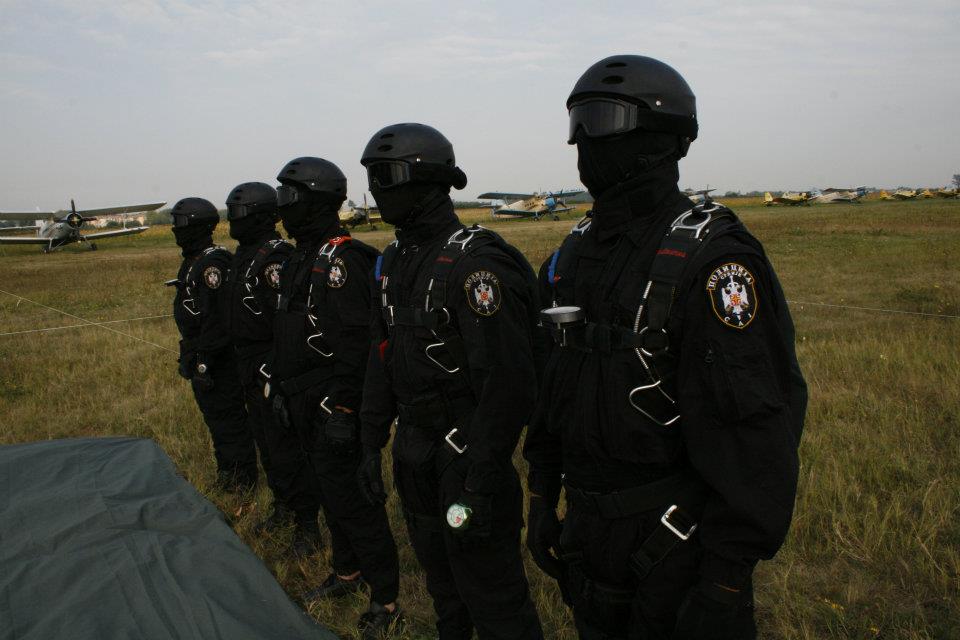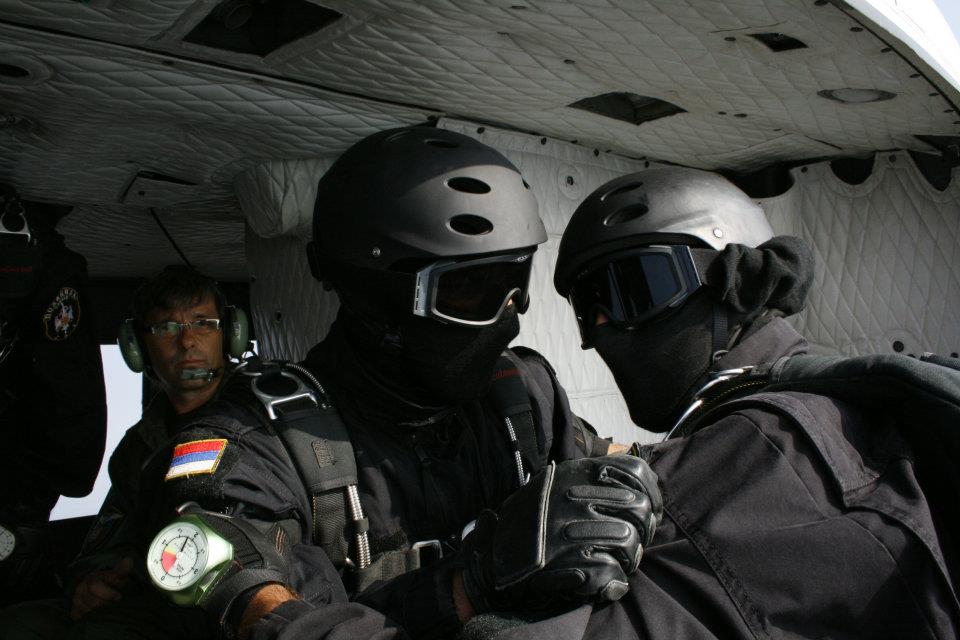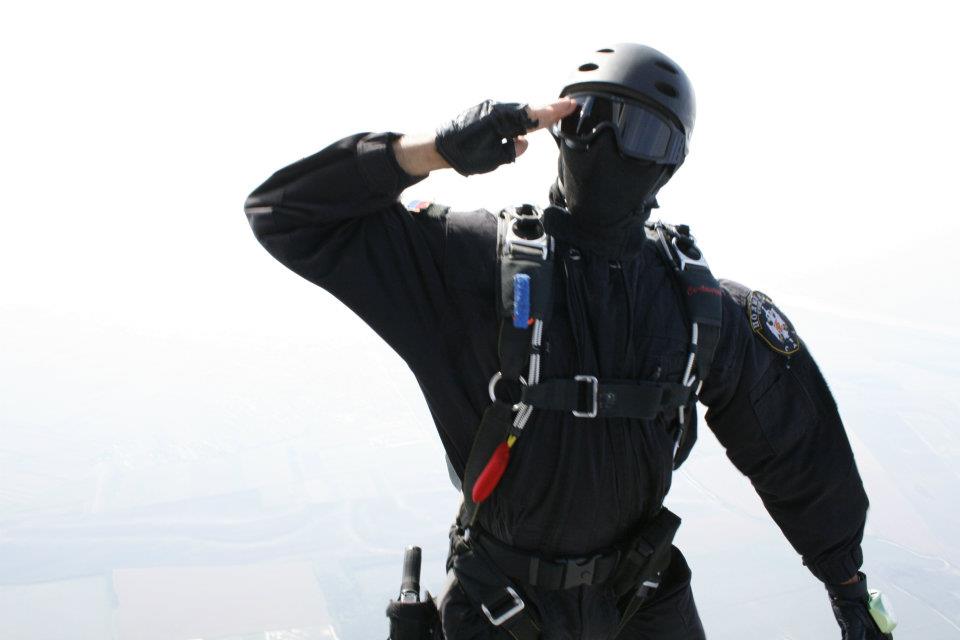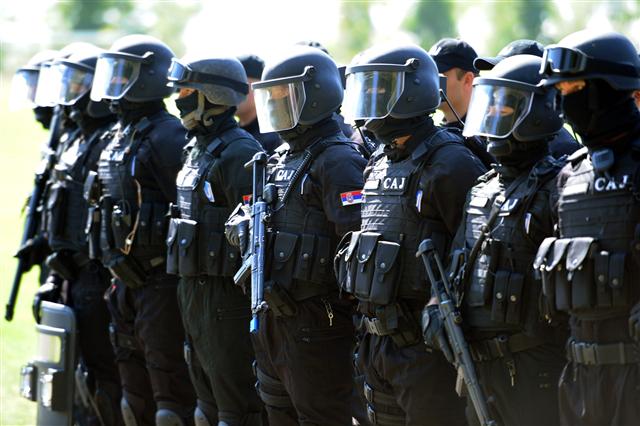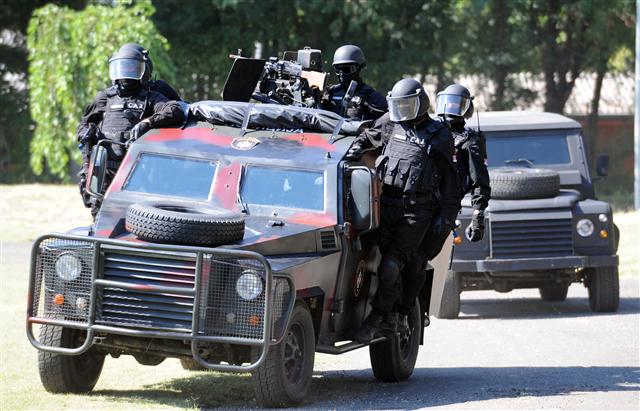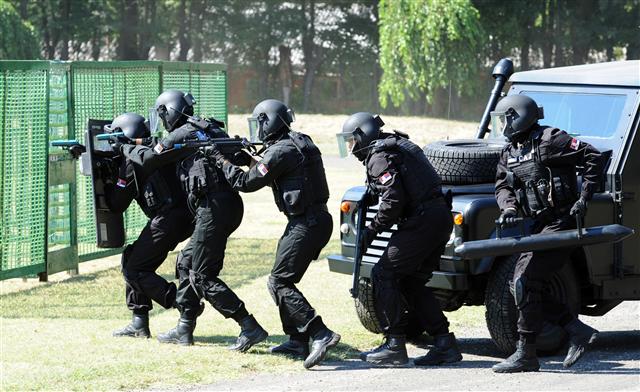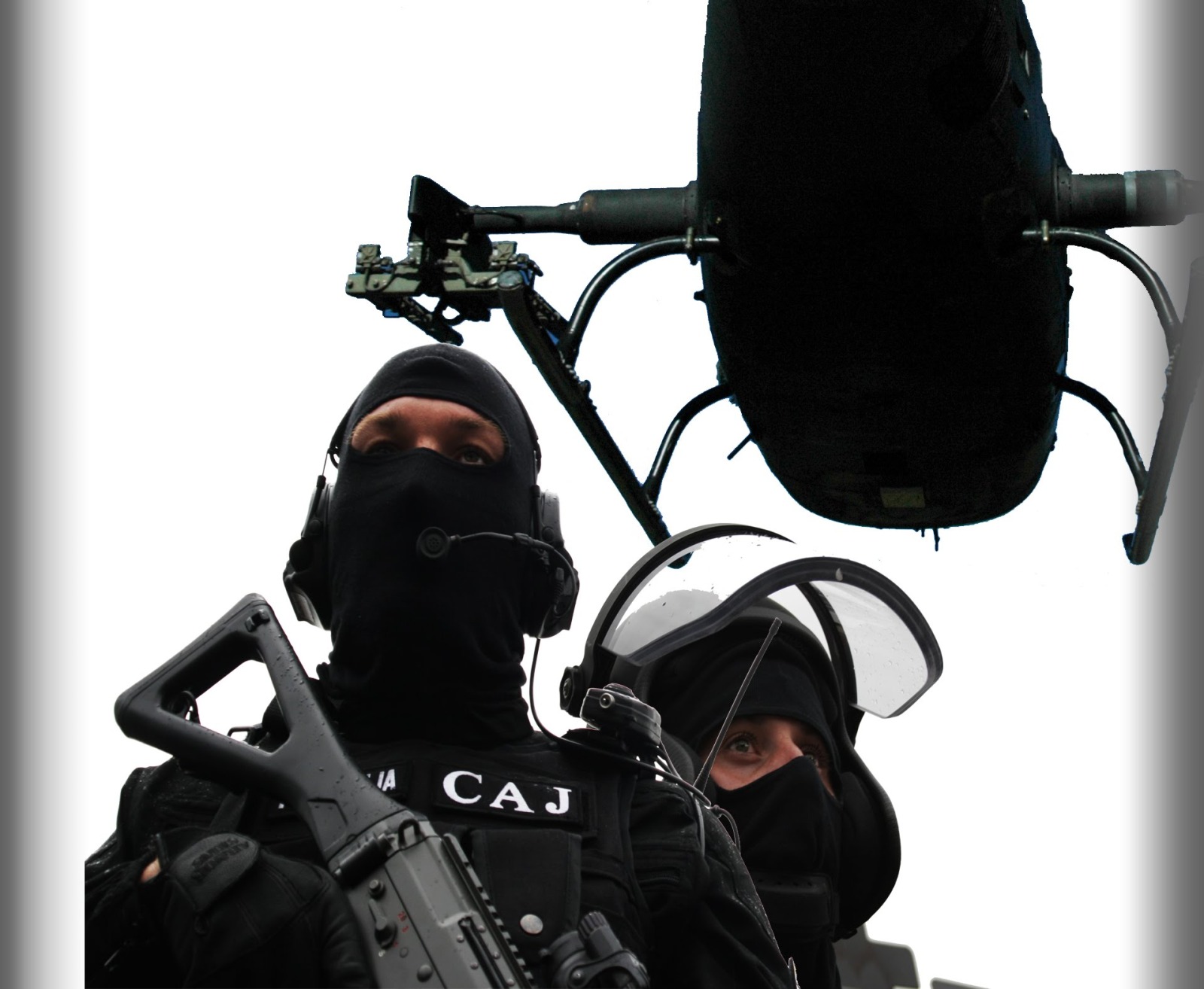proka89
FULL MEMBER

- Joined
- Jan 13, 2013
- Messages
- 1,409
- Reaction score
- 17
- Country
- Location
Serbian special forces are probably the most numerous ones in the region, with excellent equipment, great training and vast experience gathered through numerous wars in this region.
Special Brigade

Special Brigade is an elite unit of SAF continuing the tradition of antiterrorist, reconnaissance, paratrooper and diving units.
PURPOSE
Special Brigade is a joint tactical unit encompassing reconnaissance, antiterrorist, parachute and diving components. It is an especially organized unit, equipped and trained for the purpose of preparing, organizing and conducting of intelligence-reconnaissance, commando, antiterrorist, counter-insurgency, Psy.Ops. and other Special Ops in land, aerial and water combat theatre.
Special Brigade Units conduct their activities in the enemys rear, in their own rear and on the front, by implementing vertical and other forms of maneuvering.
In performing their special, combat and security-intelligence tasks determined by the Strategy and the Military Doctrine of the Republic of Serbia, the Special Brigade units can act jointly with the RS Police Force units. In order to perform special and classical activities, the brigade can deploy artillery for support, engineering, armored units, Air Force, signal, Electronic Reconnaissance and Electronic Warfare, helicopter units and other forces and means.
TASKS
Special Brigade is enabled to perform the following tasks:
- Reconnaissance activities in the strategic, operation and tactical depth, for the purpose of performing antiterrorist, and countering insurgency activities,
- Participation in intelligence and counterintelligence tasks,
- Resolving hostage situations,
- Disarming terrorist, criminal and armed groups of insurgents.
- Blocking the area and facilities
- Supressing riots
- Securing top army and state officials,
- Locating and marking targets for the aviation activities and long-range artillery in the tactical and operation depth of the enemy.
- Rescuing grounded pilots and reconnaissance-commando groups and individuals in the enemys rear,
- Air Borne Attack and aerial supplying
ARMAMENTS
Various types of artillery weapons and Special Operations weapons are used in the Special Brigade.
TRAINING
In teh Special Brigade, the following units are trained for combat:
- antiterrorist,
- parachute,
- Reconnaissance/Commando,
- diving units
- a unit for peace keeping operations
The scope of combat training is wide and involves tactical, firing and physical training of the highest professional risk. In addition to a very demanding selective training, which represents eliminatory entry criterum for special brigade, the following tasks are also performed in this unit:
-enabling the members of the units to use cold weapons, use martial arts, and to use weapons with strong firing capabilities;
-practicing complex Special Ops. tactical activities;
-training the members of the brigade in paratrooping, diving, climbing and rescue service activities
TRADITIONS
The Special Brigade was formed on 29 September 2006. It was formed by transforming and merging 72nd special brigade, 63rd paratroop brigade and parts of 82nd Мarine Center and Kobre Antiterrorist Squad.
Members of the Special Brigade celebrate 29th of September as a Day of unit.
Their motto is: "Who dares wins, who knows no fear, goes ahead".
Battalions:
63rd Parachute Battalion

The 63rd Parachute Battalion (Serbian: 63. Падобрански батаљон tr. 63. Padobranski bataljon) is one of the battalions constituting the Special Brigade of the Serbian Army. It used to be of brigade-size, but it has the status of a battalion within the restructured Serbian Army. It is intended for special, reconnaissance and diversionary operations deep behind enemy lines.
History:
By Order No. 200 of the Armed Forces Supreme Command (VKOS) of 5 February 1953, the 63rd Parachute Brigade was formed at abac. The Brigade was relocated to Novi Sad in March 1954 thanks to more agreeable circumstances. Considerable errors have been committed in the understanding of this unit's use and combat tasks. The prevailing position was that the Yugoslav People's Army(JNA) did not need larger parachute units, as, presumably, battlefield drops from the air had no chance of success in a nuclear war and with modern anti-aircraft defence and mass armoured vehicles in use. On the order of the JNA General Headquarters, the 63rd Parachute Brigade was dismissed in late 1959, and out of it 3 independent parachute battalions were formed: 159th Parachute Battalion in Skopje; 127th Parachute Battalion at Batajnica; and 148th Parachute Battalion at Cerklje. In 1964, a Parachute Training Centre was formed by combining the 159th and 127th Parachute Battalions in Ni. The 63rd Parachute Brigade was once more formed on 5 December 1967 by combining the Parachute Training Centre and the 148th Parachute Battalion. From 1967 on, the 63rd Parachute Brigade has been stationed in Ni. The Parachute Brigade recruits have participated in numerous parachuting and other domestic and international sports events, where they achieved enviable results.
Training:
In addition to being a highest-rank combat unit of this type in the Military of Serbia, the 63rd Paratroop Battalion is a unique "military school of parachuting". The "paras" are training experts on land also; they have an excellent knowledge of the mountain and its whims, of the plains, rivers and lakes, inhabited areas, communications and facilities of particular importance, in short, all the situations they may find themselves in both in peace and war. Sorties behind enemy front lines - reconnoitering and diversions - are their trademark.
Recent services:
In all the crises of the postwar era, the 63rd Paratroop Battalion has always been the first deployed, with the highest degree of combat readiness. In the course of armed conflicts in the territory of the former SFR Yugoslavia, the Battalion carried out all the assignments honourably, protecting all airports it had been assigned to. During the 1999 NATO war on Yugoslavia, the members of the 63rd Battalion fought against the KLA fighters in Kosovo, but also with diversionary detachments attempting raids from Albania on the territory of Yugoslavia. Members of the 63rd Battalion particularly excelled in their duty during an operation near the Yugoslav-Albanian border.
Overview:
From the forming of the Brigade until today, the paras have participated in 250 major combined tactical maneuvers, carried out with notable success. In the 1947-1990 period, 330,000 parachute dives had been taken, and from 1990 until now over 10,000 drops have been made each year. The 63rd Parachute Battalion earned the repute of one of the best units thanks to the exceptional efforts on the part of the troops and officers and high marks obtained in combined maneuvers.
The unit says its basic values are love of the fatherland and freedom, soldier's and parachutist's oaths, preservation of the honour of the arms, individual and collective courage, and unbreakable comradeship. The 63rd has been awarded many recognitions which its members and command cadre are proud of: the Order of the National Hero adorning our wartime banner, six Orders of Courage, and over a hundred other orders and medals awarded the 63rd Brigade members for participation in combat and other missions. Forty-six of its troops have given their lives while on parachuting and other missions.
The 63rd Parachute Battalion is a world-renowned and honoured unit. It also trains foreign armed forces in parachutist skills. The Battalion has been visited by many foreign delegations, which have assured themselves of the abilities and valor of the parachutists - their country's elite soldiers. The unit distinguishes itself by a high degree of loyalty to it by its former and present members.
72nd Reconnaissance-Commando Battalion

The 72nd Reconnaissance-Commando Battalion (Serbian: 72. Извиђачко-диверзантски батаљон, tr. Izviđačko-diverzantski bataljon) is a battalion within the Special Brigade unit in the Serbian Army. In the past it was brigade-size, and included the CT "Hawks" Battalion (now Counter-terrorist Battalion), and was known as the 72 Special Brigade. Currently it has the status of a battalion within the restructured Serbian Army. Its main tasks are reconnaissance and demolition.
The unit was formed in 1992, its headquarters are located in Pančevo.
Military Police Battalion "Cobras"

The Military Police Special Operation Battalion "Cobras" (Serbian: Батаљон војне полиције специјалне намене "Кобрe", tr. Bataljon vojne policije specijalne namene "Kobre") is a military police unit of the Serbian military, responsible for counter-terrorism, close protection and special operations.
The unit was first established by the order of the Secretary of Defense in 1978. The unit was joined with the 282nd battalion of the JNA in 1988. By the 1999 it became a separate anti-terrorist squad with a recognizable symbol of winged cobra. As of 2007 this unit is directly subordinate to the General Staff besides being part of the military police. The unit is consisted of 2 platoons and 60 members as of 2007. This unit is also responsible for close protection of military officials.
Counter-terrorist Battalion "Sokolovi"

The Counter-terrorist Battalion (Serbian: Противтерористички батаљон, tr. Protivteroristički bataljon) nicknamed: "Sokolovi" (Falcons) is a battalion within the Special Brigade unit of the Serbian Army. In the near past it was brigade-size, with 72nd Reconnaissance-Commando Battalion, and together was named 72 Special Brigade. It has the status of a battalion within the restructured Serbian Army. Its main task is Counter-terrorism. The unit was formed in 1992 and is based in Pančevo. The symbol of the Unit is the Falcon.



Special Brigade

Special Brigade is an elite unit of SAF continuing the tradition of antiterrorist, reconnaissance, paratrooper and diving units.
PURPOSE
Special Brigade is a joint tactical unit encompassing reconnaissance, antiterrorist, parachute and diving components. It is an especially organized unit, equipped and trained for the purpose of preparing, organizing and conducting of intelligence-reconnaissance, commando, antiterrorist, counter-insurgency, Psy.Ops. and other Special Ops in land, aerial and water combat theatre.
Special Brigade Units conduct their activities in the enemys rear, in their own rear and on the front, by implementing vertical and other forms of maneuvering.
In performing their special, combat and security-intelligence tasks determined by the Strategy and the Military Doctrine of the Republic of Serbia, the Special Brigade units can act jointly with the RS Police Force units. In order to perform special and classical activities, the brigade can deploy artillery for support, engineering, armored units, Air Force, signal, Electronic Reconnaissance and Electronic Warfare, helicopter units and other forces and means.
TASKS
Special Brigade is enabled to perform the following tasks:
- Reconnaissance activities in the strategic, operation and tactical depth, for the purpose of performing antiterrorist, and countering insurgency activities,
- Participation in intelligence and counterintelligence tasks,
- Resolving hostage situations,
- Disarming terrorist, criminal and armed groups of insurgents.
- Blocking the area and facilities
- Supressing riots
- Securing top army and state officials,
- Locating and marking targets for the aviation activities and long-range artillery in the tactical and operation depth of the enemy.
- Rescuing grounded pilots and reconnaissance-commando groups and individuals in the enemys rear,
- Air Borne Attack and aerial supplying
ARMAMENTS
Various types of artillery weapons and Special Operations weapons are used in the Special Brigade.
TRAINING
In teh Special Brigade, the following units are trained for combat:
- antiterrorist,
- parachute,
- Reconnaissance/Commando,
- diving units
- a unit for peace keeping operations
The scope of combat training is wide and involves tactical, firing and physical training of the highest professional risk. In addition to a very demanding selective training, which represents eliminatory entry criterum for special brigade, the following tasks are also performed in this unit:
-enabling the members of the units to use cold weapons, use martial arts, and to use weapons with strong firing capabilities;
-practicing complex Special Ops. tactical activities;
-training the members of the brigade in paratrooping, diving, climbing and rescue service activities
TRADITIONS
The Special Brigade was formed on 29 September 2006. It was formed by transforming and merging 72nd special brigade, 63rd paratroop brigade and parts of 82nd Мarine Center and Kobre Antiterrorist Squad.
Members of the Special Brigade celebrate 29th of September as a Day of unit.
Their motto is: "Who dares wins, who knows no fear, goes ahead".
Battalions:
63rd Parachute Battalion

The 63rd Parachute Battalion (Serbian: 63. Падобрански батаљон tr. 63. Padobranski bataljon) is one of the battalions constituting the Special Brigade of the Serbian Army. It used to be of brigade-size, but it has the status of a battalion within the restructured Serbian Army. It is intended for special, reconnaissance and diversionary operations deep behind enemy lines.
History:
By Order No. 200 of the Armed Forces Supreme Command (VKOS) of 5 February 1953, the 63rd Parachute Brigade was formed at abac. The Brigade was relocated to Novi Sad in March 1954 thanks to more agreeable circumstances. Considerable errors have been committed in the understanding of this unit's use and combat tasks. The prevailing position was that the Yugoslav People's Army(JNA) did not need larger parachute units, as, presumably, battlefield drops from the air had no chance of success in a nuclear war and with modern anti-aircraft defence and mass armoured vehicles in use. On the order of the JNA General Headquarters, the 63rd Parachute Brigade was dismissed in late 1959, and out of it 3 independent parachute battalions were formed: 159th Parachute Battalion in Skopje; 127th Parachute Battalion at Batajnica; and 148th Parachute Battalion at Cerklje. In 1964, a Parachute Training Centre was formed by combining the 159th and 127th Parachute Battalions in Ni. The 63rd Parachute Brigade was once more formed on 5 December 1967 by combining the Parachute Training Centre and the 148th Parachute Battalion. From 1967 on, the 63rd Parachute Brigade has been stationed in Ni. The Parachute Brigade recruits have participated in numerous parachuting and other domestic and international sports events, where they achieved enviable results.
Training:
In addition to being a highest-rank combat unit of this type in the Military of Serbia, the 63rd Paratroop Battalion is a unique "military school of parachuting". The "paras" are training experts on land also; they have an excellent knowledge of the mountain and its whims, of the plains, rivers and lakes, inhabited areas, communications and facilities of particular importance, in short, all the situations they may find themselves in both in peace and war. Sorties behind enemy front lines - reconnoitering and diversions - are their trademark.
Recent services:
In all the crises of the postwar era, the 63rd Paratroop Battalion has always been the first deployed, with the highest degree of combat readiness. In the course of armed conflicts in the territory of the former SFR Yugoslavia, the Battalion carried out all the assignments honourably, protecting all airports it had been assigned to. During the 1999 NATO war on Yugoslavia, the members of the 63rd Battalion fought against the KLA fighters in Kosovo, but also with diversionary detachments attempting raids from Albania on the territory of Yugoslavia. Members of the 63rd Battalion particularly excelled in their duty during an operation near the Yugoslav-Albanian border.
Overview:
From the forming of the Brigade until today, the paras have participated in 250 major combined tactical maneuvers, carried out with notable success. In the 1947-1990 period, 330,000 parachute dives had been taken, and from 1990 until now over 10,000 drops have been made each year. The 63rd Parachute Battalion earned the repute of one of the best units thanks to the exceptional efforts on the part of the troops and officers and high marks obtained in combined maneuvers.
The unit says its basic values are love of the fatherland and freedom, soldier's and parachutist's oaths, preservation of the honour of the arms, individual and collective courage, and unbreakable comradeship. The 63rd has been awarded many recognitions which its members and command cadre are proud of: the Order of the National Hero adorning our wartime banner, six Orders of Courage, and over a hundred other orders and medals awarded the 63rd Brigade members for participation in combat and other missions. Forty-six of its troops have given their lives while on parachuting and other missions.
The 63rd Parachute Battalion is a world-renowned and honoured unit. It also trains foreign armed forces in parachutist skills. The Battalion has been visited by many foreign delegations, which have assured themselves of the abilities and valor of the parachutists - their country's elite soldiers. The unit distinguishes itself by a high degree of loyalty to it by its former and present members.
72nd Reconnaissance-Commando Battalion

The 72nd Reconnaissance-Commando Battalion (Serbian: 72. Извиђачко-диверзантски батаљон, tr. Izviđačko-diverzantski bataljon) is a battalion within the Special Brigade unit in the Serbian Army. In the past it was brigade-size, and included the CT "Hawks" Battalion (now Counter-terrorist Battalion), and was known as the 72 Special Brigade. Currently it has the status of a battalion within the restructured Serbian Army. Its main tasks are reconnaissance and demolition.
The unit was formed in 1992, its headquarters are located in Pančevo.
Military Police Battalion "Cobras"

The Military Police Special Operation Battalion "Cobras" (Serbian: Батаљон војне полиције специјалне намене "Кобрe", tr. Bataljon vojne policije specijalne namene "Kobre") is a military police unit of the Serbian military, responsible for counter-terrorism, close protection and special operations.
The unit was first established by the order of the Secretary of Defense in 1978. The unit was joined with the 282nd battalion of the JNA in 1988. By the 1999 it became a separate anti-terrorist squad with a recognizable symbol of winged cobra. As of 2007 this unit is directly subordinate to the General Staff besides being part of the military police. The unit is consisted of 2 platoons and 60 members as of 2007. This unit is also responsible for close protection of military officials.
Counter-terrorist Battalion "Sokolovi"

The Counter-terrorist Battalion (Serbian: Противтерористички батаљон, tr. Protivteroristički bataljon) nicknamed: "Sokolovi" (Falcons) is a battalion within the Special Brigade unit of the Serbian Army. In the near past it was brigade-size, with 72nd Reconnaissance-Commando Battalion, and together was named 72 Special Brigade. It has the status of a battalion within the restructured Serbian Army. Its main task is Counter-terrorism. The unit was formed in 1992 and is based in Pančevo. The symbol of the Unit is the Falcon.
























